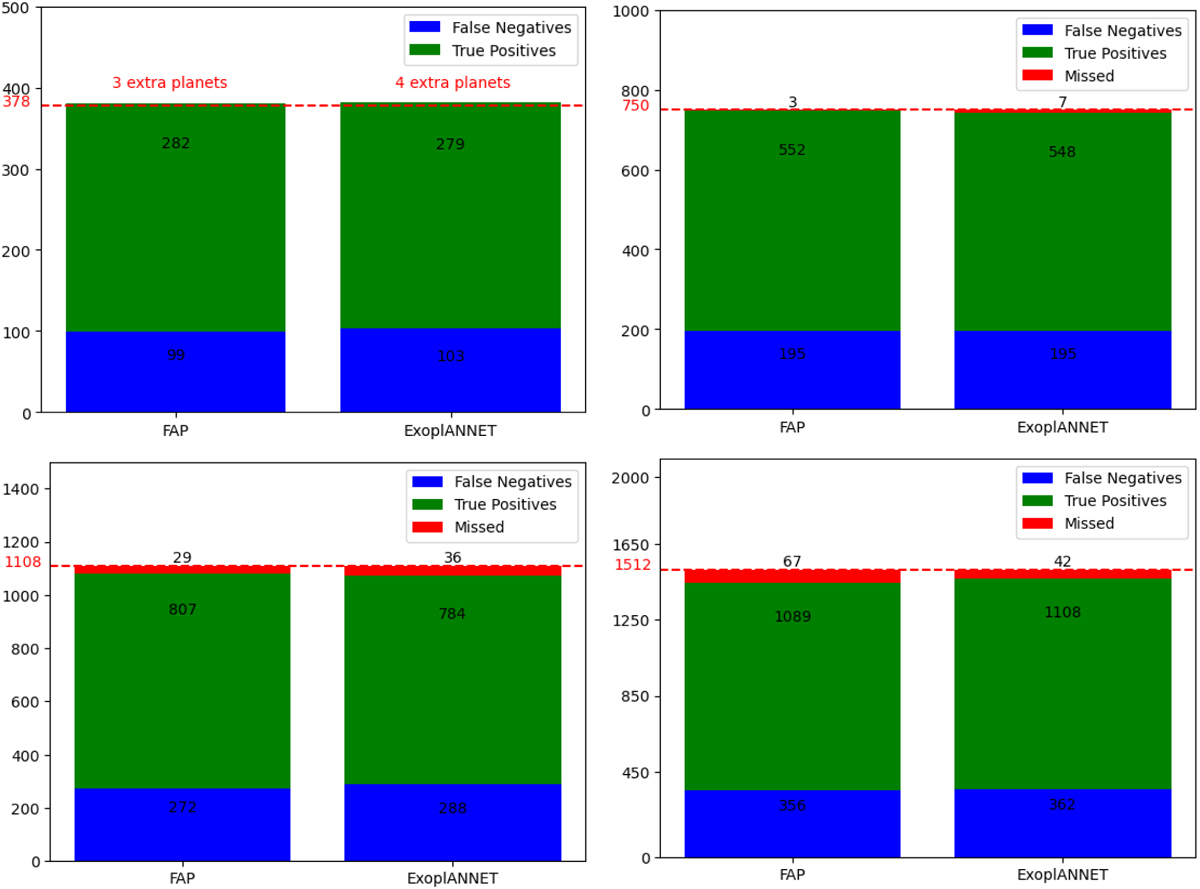Fig. 8

Download original image
Detections of both implementations of the Virtual Astronomer compared to the detections provided by a hypothetical optimal method with flawless decision making (see text for details). Each panel corresponds to 1000 systems with a given number of companions (upper left: 1000 stars with one planet; upper right: 1000 stars with two planets; lower left: 1000 stars with three planets; and lower right: 1000 stars with four planets). The number of planets detected by the flawless decision-making method is marked by dashed horizontal lines and indicated in red on the vertical axes. The bars present the true positives (i.e. detected planets; green), false negatives (blue), and the planets that were not detected (i.e. their peak was not evaluated; red). We note that even using the perfect method, more than half of the planets are missed. We also note that for systems with one planet, both FAP and ExoplANNET produce more planetary classifications than the flawless method.
Current usage metrics show cumulative count of Article Views (full-text article views including HTML views, PDF and ePub downloads, according to the available data) and Abstracts Views on Vision4Press platform.
Data correspond to usage on the plateform after 2015. The current usage metrics is available 48-96 hours after online publication and is updated daily on week days.
Initial download of the metrics may take a while.


